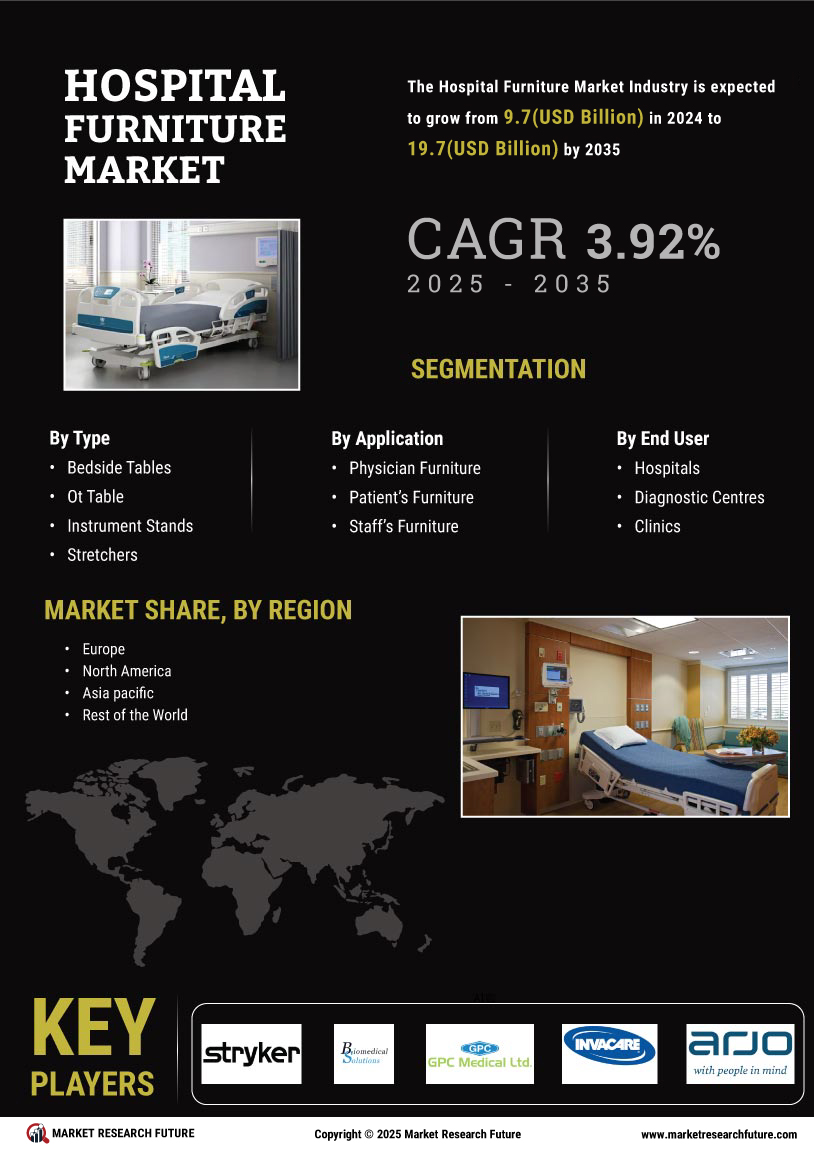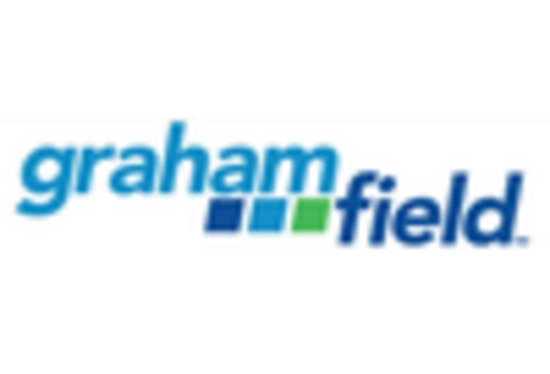Aging Population
The aging population is a critical driver for the Hospital Furniture Market. As the demographic shifts towards an older age group, the demand for healthcare services increases, necessitating more hospital beds, examination tables, and other essential furniture. By 2025, it is projected that the number of individuals aged 65 and older will reach approximately 1.5 billion worldwide. This demographic trend compels healthcare facilities to invest in modern hospital furniture that accommodates the specific needs of elderly patients, such as adjustable beds and ergonomic seating. Consequently, the Hospital Furniture Market is likely to experience substantial growth as healthcare providers strive to enhance patient comfort and safety, thereby improving overall care quality.
Focus on Infection Control
The focus on infection control is increasingly influencing the Hospital Furniture Market. Hospitals are prioritizing the purchase of furniture that is easy to clean and resistant to microbial growth. This trend is driven by the need to minimize hospital-acquired infections, which can significantly impact patient recovery times and healthcare costs. Furniture made from materials that can withstand rigorous cleaning protocols is becoming essential. As a result, manufacturers are innovating to produce hospital furniture that not only meets aesthetic and functional requirements but also adheres to stringent infection control standards. This heightened emphasis on hygiene is likely to shape purchasing decisions in the Hospital Furniture Market.
Technological Advancements
Technological advancements play a pivotal role in shaping the Hospital Furniture Market. Innovations such as smart beds, automated stretchers, and integrated monitoring systems are increasingly being adopted in healthcare settings. These advancements not only enhance patient care but also streamline hospital operations. For instance, smart beds equipped with sensors can monitor patient vitals and adjust positions automatically, thereby reducing the workload on nursing staff. The market for smart hospital furniture is expected to grow significantly, with estimates suggesting a compound annual growth rate of over 10% in the coming years. This trend indicates that hospitals are prioritizing investments in technologically advanced furniture to improve efficiency and patient outcomes.
Increased Healthcare Expenditure
Increased healthcare expenditure is a significant driver for the Hospital Furniture Market. Governments and private sectors are allocating more funds towards healthcare infrastructure, which includes the procurement of hospital furniture. According to recent data, healthcare spending is projected to reach over 10 trillion USD by 2025, reflecting a growing commitment to improving healthcare facilities. This surge in investment is likely to result in the modernization of hospital environments, necessitating the purchase of new furniture that meets contemporary standards. As healthcare facilities expand and upgrade, the demand for high-quality, durable, and functional hospital furniture will continue to rise, thereby propelling the market forward.
Rising Demand for Patient Comfort
Rising demand for patient comfort is a notable driver in the Hospital Furniture Market. Patients increasingly expect a comfortable and supportive environment during their hospital stays, which has led to a shift in furniture design. Hospitals are investing in ergonomic beds, recliners, and waiting room furniture that enhance the patient experience. Research indicates that patient satisfaction is closely linked to comfort levels, which can influence recovery outcomes. Consequently, healthcare providers are recognizing the importance of investing in high-quality furniture that meets these expectations. This trend is likely to continue, as patient-centered care becomes a priority in healthcare settings, further driving growth in the Hospital Furniture Market.


















Leave a Comment